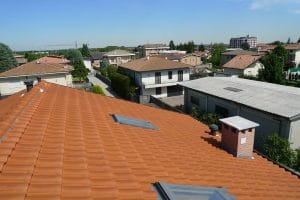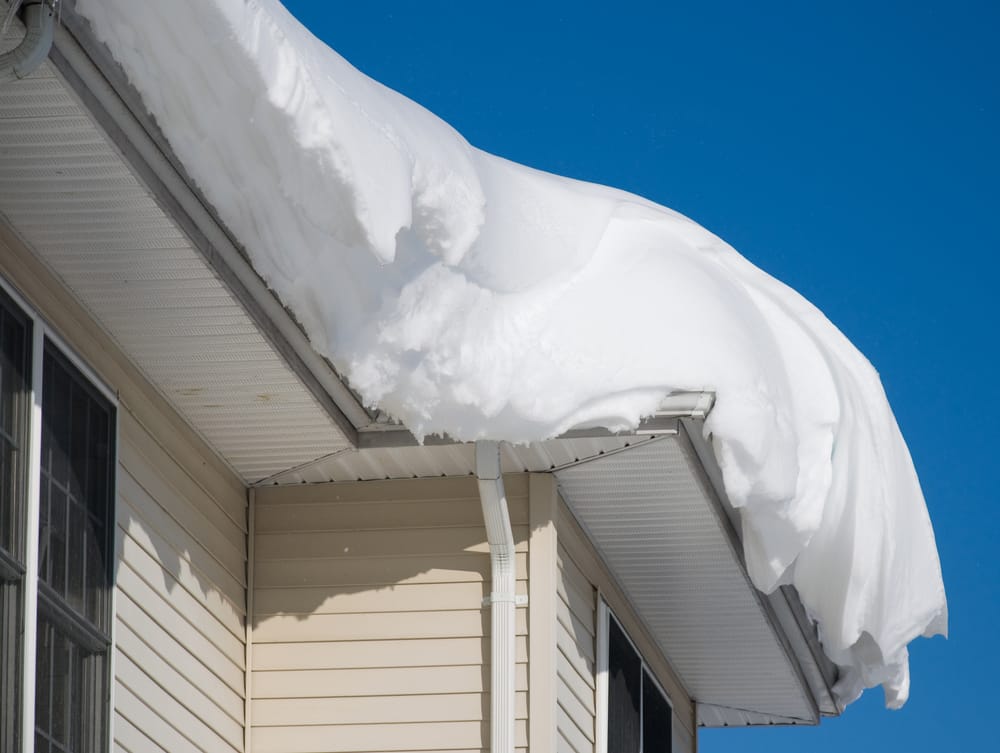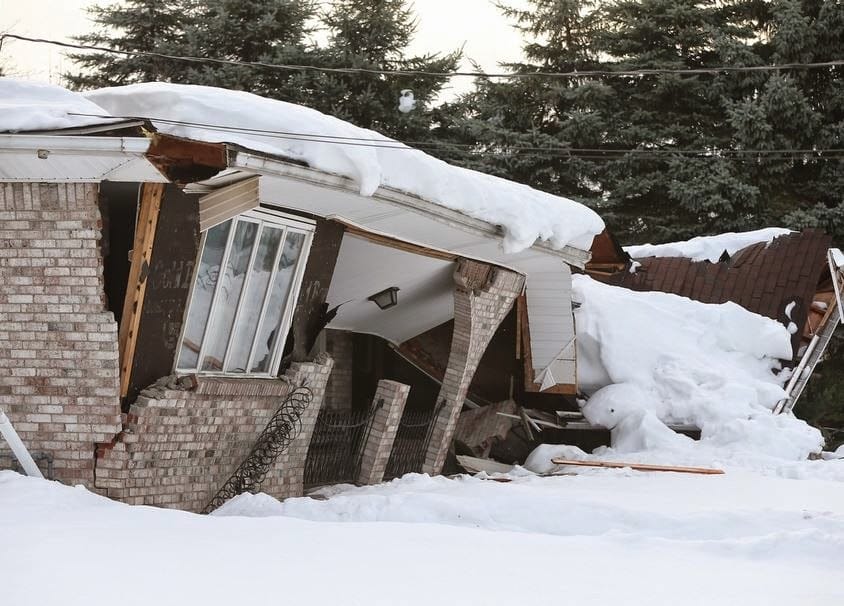When you’re a kid, snow is simply magical. Cold white fluff descends from the sky, and when it gathers on the ground, you can make a snow fort with it. Snow days from school, sledding on the local hill, chucking snowballs at your siblings… what could be better?
Unfortunately, we have become somewhat more jaded as adults. The precipitation that accompanies the cold season is momentarily pretty at best – and the rest of the time, it’s a major headache. Snow means hauling the winter tires out of storage, constantly shoveling the driveway, and perilous white-knuckle car rides.
And to top it all off, homeowners have another winter worry: snow load. The thick blanket of snow that covers the ground isn’t the only one that needs shoveling. Snow accumulation on your roof may make your home look like a cute little gingerbread house, but it can have dire consequences if left unchecked.
Up On The Rooftop
 Ideally, your roof shouldn’t accumulate a ton of snow. As a general rule, your roof’s construction and angle should allow buildup to slough right off. However, this isn’t the case for lower-sloped and flat roofs, which is why types of roofs tend to vary by region.
Ideally, your roof shouldn’t accumulate a ton of snow. As a general rule, your roof’s construction and angle should allow buildup to slough right off. However, this isn’t the case for lower-sloped and flat roofs, which is why types of roofs tend to vary by region.
Flat roofs are often preferable for homeowners in warm states like California and Arizona. Pitched roofs, meanwhile, are appropriate for any climate, although steeper pitches are common in snowy zones and lower pitches in more temperate climes.
There’s no hard and fast rule, though, and sometimes snow builds up, regardless of your roof’s pitch. Buildup can also result from quick-changing weather conditions: heavy snowfalls followed by a brief mild period, freezing rain, and a deep freeze can be a perfect storm of destruction. These weather events can allow ice to form. Ice paired with snow buildup can halt surface runoff, cause water to seep into the roof, or even become so heavy that the building may collapse. It’s not a pretty picture. So when this happens, it’s important to know what to do and when to do it.
How Much is Too Much?
 How much snow is too much snow, you ask? Well, fortunately, there is a way to measure the snow load your roof can bear. Your home’s snow load threshold typically depends on a few factors:
How much snow is too much snow, you ask? Well, fortunately, there is a way to measure the snow load your roof can bear. Your home’s snow load threshold typically depends on a few factors:
The age of the structure
- The condition of the roof
- The thickness of snow buildup
- The composition of the buildup
The height of the accumulation in inches isn’t always telling of the actual weight. Wet, compacted snow is a lot heavier than the same amount of powdery snow. You also have to consider the age and integrity of the roof. What are its dimensions, including length, width, and pitch? Is it regularly repaired and maintained? What kind of material is it? What is the permissible load your roof was built to bear?
Your roof’s permissible load weight is usually based on your state and/or city, so it’s simple to find out the information you need. The allowable load is calculated based on regulations from the American Society of Civil Engineers, which implemented load-bearing standards in 1988. Long story short, if your house was built before 1988, your roof might not meet the permissible load regulations, and you should proceed with caution.
While this calculation might seem abstract and complicated, it’s easy to plug the data into a snow load calculator just like this one.
The Danger Zone
 In some ways, snow buildup on your roof is a good sign: it means that your attic is doing its job. Good insulation will keep the heat inside your house and prevent it from seeping out through the roof. While melting is normal around vents and fireplace exhausts, there shouldn’t be any bare patches in other areas. If you notice random melted patches in the snow or icicles on the eavestroughs, that’s a sign that your insulation is patchy or your ventilation isn’t working right.
In some ways, snow buildup on your roof is a good sign: it means that your attic is doing its job. Good insulation will keep the heat inside your house and prevent it from seeping out through the roof. While melting is normal around vents and fireplace exhausts, there shouldn’t be any bare patches in other areas. If you notice random melted patches in the snow or icicles on the eavestroughs, that’s a sign that your insulation is patchy or your ventilation isn’t working right.
Assessing the snow load threshold of your home is a measure intended to prevent damage to the structure. However, there are warning signs to indicate that the strain on your roof is getting to the tipping point:
- Cracks running along your home’s interior walls
- Audible creaks
- Doors that get stuck closed or open on their own
If you’re feeling a little overwhelmed by this blizzard of information, don’t panic! When it comes to clearing the roof, trust your gut. And when in doubt, get the shovel. For everything else, Winthorpe Design & Build is here to help, and we have a passion for protecting your greatest asset. Call today, and let us show you what we can do.





